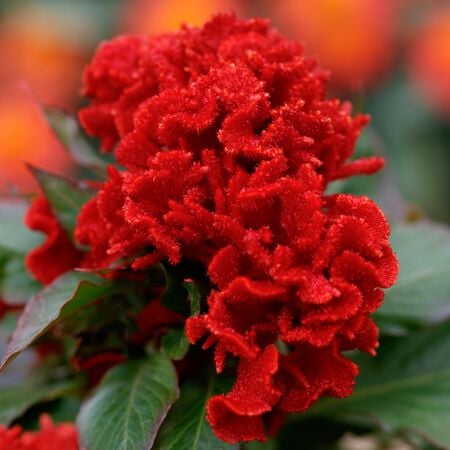Chief Red, Celosia Seeds
Key Attributes
Key Attributes
Product Details
Weight
.008Plant Height
36-40"Botanical Name
Celosia argentea cristataFlower Height
36-40"Seed Type
SeedAdditional Characteristics
Extended BloomsSeeds Per Gram
1,757Seeds Per Pound
796,800Packet
100 SeedsSow Depth
1/8"Seeds Per Ounce
49,800Breed
Open-pollinatedSun
Full SunUses
Bouquet Filler, Cut FlowersLife Cycle
AnnualSow Method
TransplantCategories
FlowersDays To Maturity (# Days)
100Components
Growing Instructions
![]() Learning Download: How to Grow Citronella
Learning Download: How to Grow Citronella
Citronella, also known as Mosquito Plant, is used to grow along a border or to add different heights and textures in the garden. By crushing one of the plant’s leaves and rubbing it against the skin, it produces a wonderful scent that also keeps mosquitoes away.
Before Planting: Plant Citronella in the spring after all danger of frost has passed. A good rule of thumb is to plant Citronella at about the same time you plant tomatoes outside.
Planting: Citronella can be planted in the garden or in patio containers.
Watering: When watering, be sure to water around the base of the plant to prevent water damage to the foliage.
Fertilizer: Feed the plant regularly with an all-purpose fertilizer.
Days to Maturity: Citronella will bloom all summer long. Note that the leaves will only ward off mosquitoes when crushed.
Harvesting: Citronella makes an excellent addition to a cut-flower bouquet as it might aid in holding the other flowers in the bouquet in place better.
Tips: Citronella likes full sun, and if it doesn’t receive enough light it will become lanky. Cut it back and move to a better area with full sun next year so that it will grow back in a better shape.
Shipping Schedule
Our Seed Promise
 "Agriculture and seeds" provide the basis upon which our lives depend. We must protect this foundation as a safe and genetically stable source for future generations. For the benefit of all farmers, gardeners and consumers who want an alternative, we pledge that we do not knowingly buy or sell genetically engineered seeds or plants.
"Agriculture and seeds" provide the basis upon which our lives depend. We must protect this foundation as a safe and genetically stable source for future generations. For the benefit of all farmers, gardeners and consumers who want an alternative, we pledge that we do not knowingly buy or sell genetically engineered seeds or plants.
The mechanical transfer of genetic material outside of natural reproductive methods and between genera, families or kingdoms, poses great biological risks as well as economic, political, and cultural threats. We feel that genetically engineered varieties have been insufficiently tested prior to public release. More research and testing is necessary to further assess the potential risks of genetically engineered seeds. Further, we wish to support agricultural progress that leads to healthier soils, to genetically diverse agricultural ecosystems, and ultimately to healthy people and communities.
To learn more about the "Safe Seed Pledge" please visit www.councilforresponsiblegenetics.org.

